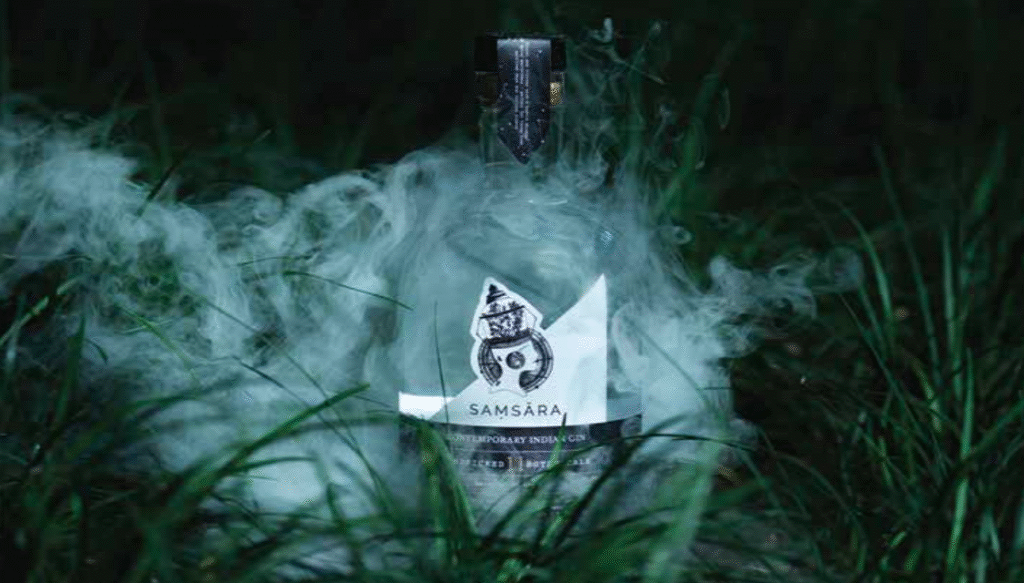SAMSARA
CONTEMPORARY INDIAN GIN
New World Experiments
THE CITY OF PINK
GIN’S JOURNEY IN INDIA:
TURBULENT RISE,
STEADY FOOTING

Aditya Aggarwal
Founder,
Spaceman Spirits Lab
When I look back to the early days of SAMSĀRA, our ambition was simple, create a
gin that speaks of place, that reflects the soil,
the stories, the botanicals around us. But the
path hasn’t always been smooth. The story of
gin in India is a fascinating tale of aspiration,
disruption, retreat and resilience. As we
unveil the 50th issue of 0 KM at ProWine
Mumbai, I want to share my reflections, its
ups and downs and how I believe gin is
finding a steady foothold in India.
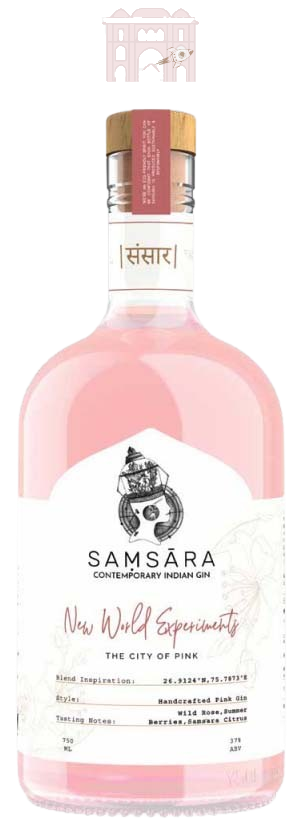
The Early Sparks: Imported Prestige,
Limited Reach
Gin has long occupied a niche role in India. In
earlier decades, it was largely an imported
spirit – British brands, Dutch brands, a touch
of colonial legacy that appealed to a small set
of connoisseurs and expatriates. It was
exotic, aspirational, but distant. Lack of
drinking education, underdeveloped cocktail
culture, limited distribution and low
consumer familiarity all kept gin a fringe
category.
Even when cocktails began gaining
popularity in Indian metros, gin tended to be
overshadowed by vodka and rum. The classic
gin & tonic, so emblematic in other markets,
was often restricted to premium hotels or
foreign tourists. Many Indian consumers
either didn’t know what gin was or assumed it
to be a niche European oddity.
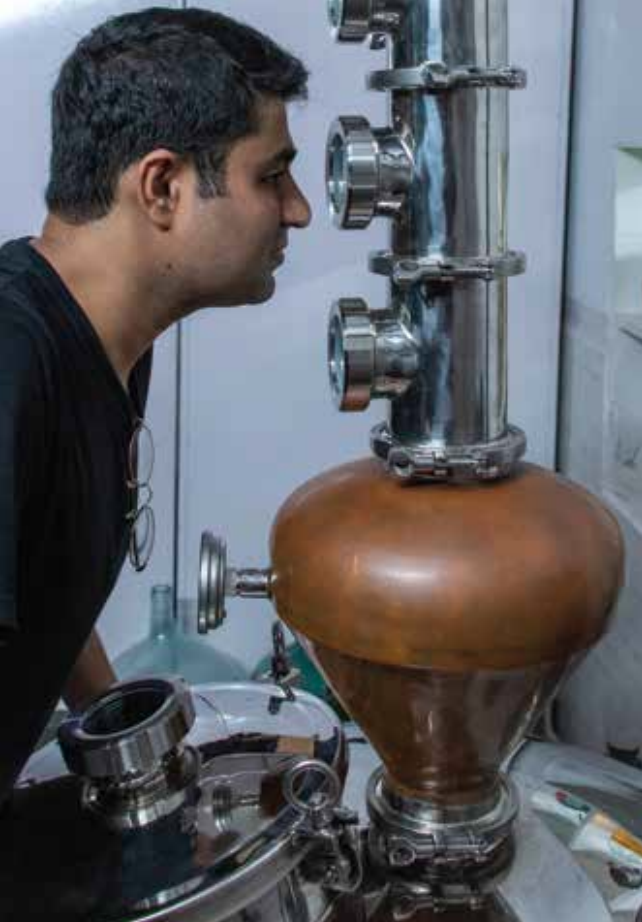
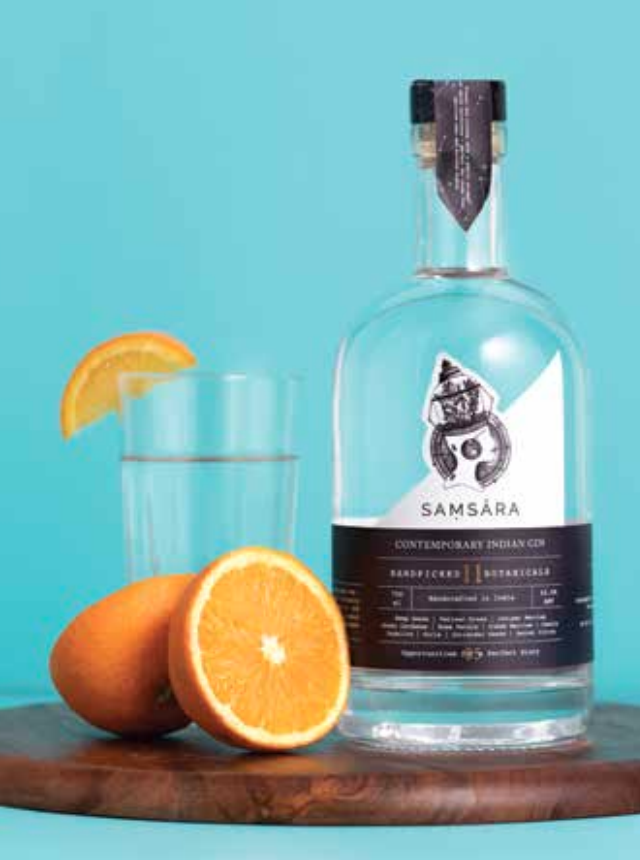
The First Surge: Premiumisation & Cocktail
Culture
The turning point arrived in the late 2010s,
when urban Indian consumers – millennials,
globally exposed, socially adventurous,
started exploring beyond safe spirits.
Cocktail bars sprouted in Mumbai, Delhi,
Bangalore and cities began to host mixology
festivals, gin dinners, masterclasses.
Suddenly gin was the canvas on which
bartenders could paint flavours, botanicals,
local ingredients, fusions.
This wave of curiosity helped
premium-and-above gin volumes in India
grew by 8% in the 2010s, with expectations
of sustained growth over the coming
decades. Fast forward to 2025, the broader
Indian gin market is now projected to reach
USD 1.8 billion by 2030. Even more
conservative projections see the market
expanding steadily through the 2030s.
Craft gin distilleries have played a defining
role in this growth. They differentiated by
tying their spirits to Indian identity, infusing
local botanicals, telling stories of terrain,
seasons and indigenous herbs. Brands like
Greater Than, Hapusa, Stranger & Sons and
Jaisalmer began to break through, earning
awards in international spirits contests. The
allure of “local but premium” resonated
deeply with consumers seeking more than a
formulaic drink.
The Headwinds: Costs, Regulation,
Consumer Education
The overall journey hasn’t been smooth.
Whenever growth accelerates, structural
barriers push back.
– High input and regulatory costs
Gin, more than many spirits, depends on
botanical diversity, quality control and
thoughtful distilling. But input costs,
imported juniper, exotic botanical extracts
and premium glass bottles, face steep import
duties and shipping overheads. Overheads
such as labelling, packaging, logistics, excise
and state-level taxes eat into already slim
margins. Some states levy astronomical
markups or restrict distribution channels,
limiting scale.
– Regulatory and distribution challenges
India’s regulatory environment is fragmented.
Liquor is a state subject; every state enacts its
own rules on licensing, advertising, transport,
retailing and taxation. For a gin producer,
expanding across states means navigating a
maze of permits, approvals and local politics.
Advertising restrictions further constrain
consumer outreach; the spirit industry can’t promote itself in conventional ways. In many
states, direct-to-consumer shipping is
disallowed, limiting reach.
– Consumer education & inertia
Gin still remains unfamiliar to large swathes of
India’s drinking population. Many consumers
default to whisky or rum. Even when they try
gin, they are unsure how to drink it -neat,
tonic, cocktail? This means brands must
invest heavily in education, sampling,
bartender training, events and
collaborations. The cost of awareness is high
and many brands burn cash before traction.
– Global softness & changing trends
Interestingly, while India’s gin story has
momentum, globally the gin category has
seen some contraction. In markets like the UK
and Spain, premium gin sales have cooled
and some consumers are gravitating toward
other categories or flavoured spirits. This
global headwind can dictate import
strategies, pricing pressures and investor
sentiment.

The Resilience: Why Gin Endures
in India
Despite turbulence, gin has shown
a remarkable ability to adapt and
evolve in India. Here’s why I
believe it continues to survive and
even thrive.
1. The “canvas” quality of gin
Gin is a versatile spirit. It’s not fixed
to one flavour, one terroir, one
style. It allows experimentation. In
India, distillers have leveraged this
flexibility to incorporate native
botanicals – Himalayan juniper,
Nagpur orange peel, ashwagandha,
local citrus and spices to create
identity. These innovations make gin feel Indian, not imported.
2. The cocktail wave is still young
Indian cocktail culture is nascent compared
to mature markets. Many cities still lack
enough quality cocktail bars; many drinkers
are yet to explore beyond the basic. This
leaves significant headroom for gin to grow
as a chosen spirit for mixology. Bars and
consumers discovering gin now tend to stay,
building loyalty.
3. Premiumization & “drink better, not more”
Indian consumers, especially in the urban
class, are shifting consumption patterns.
Instead of chasing quantity, many prefer
quality. They are willing to pay more for
authenticity, craftsmanship and story. Gin fits
beautifully into that framing – an artisanal,
botanical-rich spirit. That helps it avoid direct
competition with bulk spirits and
commoditized categories.
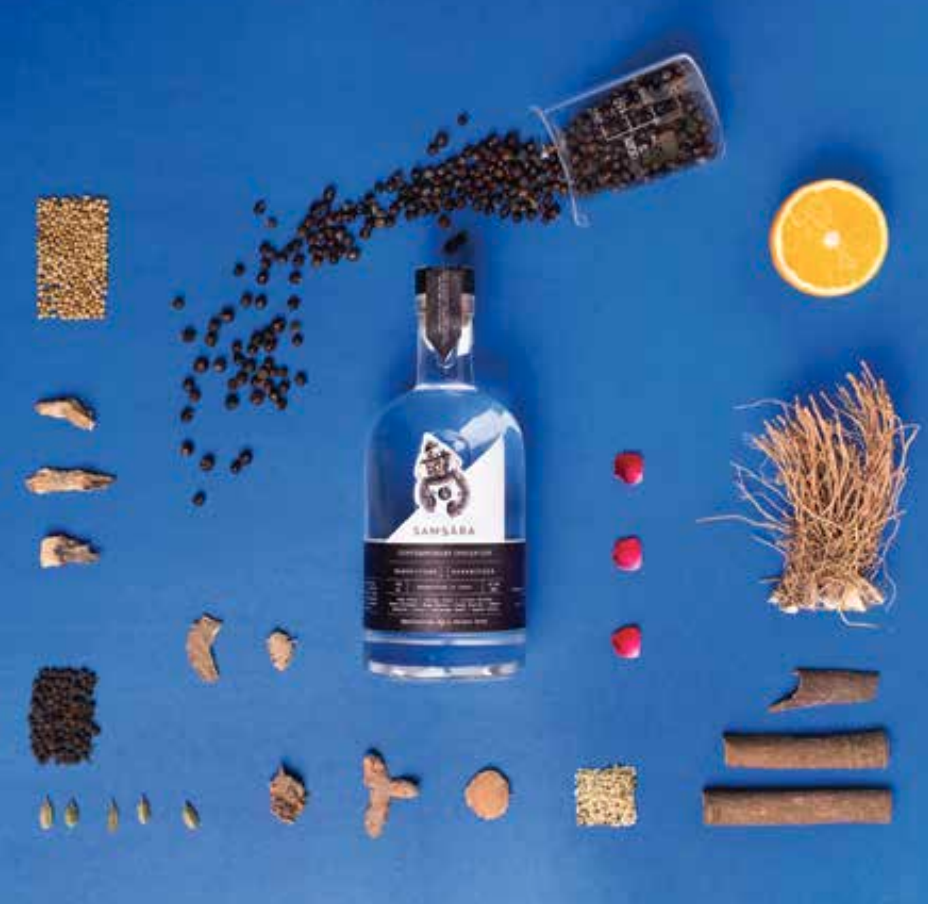
4. Strategic partnerships & consolidation
Larger spirits houses are recognising gin’s
potential. In 2025, Diageo’s Indian arm
acquired NAO Spirits, the maker of Greater
Than and Hapusa, to expand its premium
portfolio. Further, Tilaknagar Industries
acquired a 20% stake in Spaceman Spirits
Lab, the makers of SAMSĀRA Gin. Such
moves bring capital, distribution muscle and
legitimacy to craft gin brands. They also
signal to investors and the ecosystem that gin
is not a fad.
5. Normalization Through Familiarity
Every restaurant that offers a gin cocktail,
every bar that introduces gin flights, every
consumer who tastes it adds momentum.
Over time, “gin for special occasions” is
shifting toward “gin for everyday
exploration.” That slow but steady
reorientation builds a base. The more
consumers taste, the more they become
ambassadors to friends, family and social media.

Lessons from SAMSĀRA’s Journey
At SAMSĀRA, our story mirrors the broad arc
of gin in India, with our own trials, setbacks,
and small triumphs. Here are some lessons
I’ve internalized over these years:
• Start local, think global: We began by
focusing on local flavours close to home –
botanicals indigenous to our region and
honed small volumes. But from day one,
we wanted global quality, compliance
with international standard and export
readiness.
• Educate relentlessly: We invested heavily
in tastings, collaborations with bars,
bartenders and workshops. Every person
who tries our gin needs to understand its
story and how to enjoy it. That cost is
non-negotiable.
• Iterate fast, but carefully: Feedback from
consumers, bartenders, events, informed
small tweaks in balance, botanicals and
drop sizes. But we never compromised on
core quality. In gin, reputation is fragile.
• Build relationships, not just transactions:
In India, trust matters deeply. We nurtured
relationships with state regulators, local
distributors, importers, sommeliers and
bartenders. Those alliances helped during
tough patches
• Stay resilient to setbacks: Delays in
licensing, tax demands, cash-flow
crunches – they came. But every time we
rebalanced, shifted strategy, tightened
belts. The ability to absorb shocks, stay
nimble and not lose conviction is critical.
Outlook & Call to Action
So, where does gin in India go from here?
Over the next decade, I foresee Indian spirits
attaining the same prestige and respect as
Japanese Spirits command today. This being
said, I also foresee steady, sustainable growth
rather than explosive booms. The India gin
market may cross the USD 1.8 billion
threshold by 2030. The middle premium
segment seems especially poised to expand,
accessible enough to invite many, premium
enough to retain margin.
In the larger sense, success will depend on:
• Regulatory reform & harmonization:
Simplifying interstate logistics, licensing,
taxation, promoting direct-to-consumer
models and easing advertisement
burdens will unlock potential.
• Capacity building: More craft distilleries
must be incubated, with access to
affordable capital, shared infrastructure,
R&D, technical assistance.
• Consumer literacy: The more consumers
understand gin’s complexity, the better
they will value it. Education through
media, tastings, seminars must continue.
• Exports as a lever: Indian gins have
earned praise worldwide. Exporting helps
raise domestic brand prestige and scale
economics.
• Collaborative ecosystem: Distillers,
suppliers, bar owners, regulators, media –
collaboration will be more powerful than
competition.

As we unveil 0 KM’s 50th edition at Prowine
Mumbai, I feel hopeful. The global gin trend
in India has been bumpy, with peaks and
troughs but today, it is steadily finding its own
terrain. The journey continues and I believe
gin will be among India’s most meaningful
contributions to the global spirits narrative.
To all fellow distillers, bartenders, investors
and curious drinkers – I invite you to stay
curious, stay bold, keep experimenting.
Because gin, in its many permutations, still
has many stories left to tell in India.
Here’s to the next chapter – cheers!

